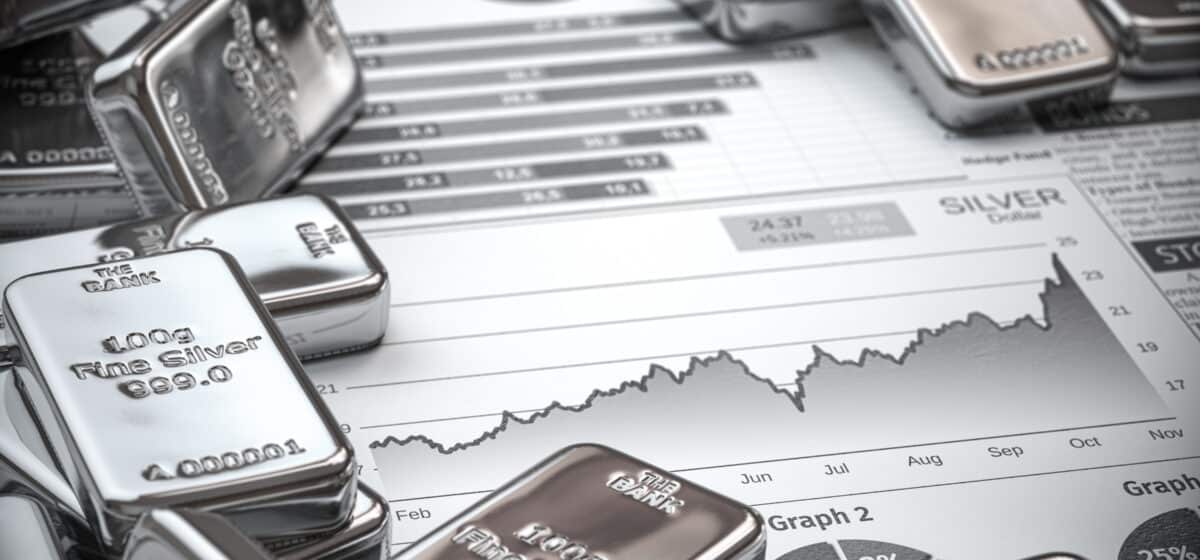Authored by Global X ETFs
When investing in precious metals for a Self-Managed Super Fund (SMSF), silver is often overlooked despite having many unique beneficial attributes of its own. While precious metals are generally considered safe haven assets due to their scarcity and non-replicability (as opposed to fiat currencies such as the AUD), silver additionally boasts a strong exposure to industrial demand, and can perform in strong market conditions.
1. Industrial Demands: Silver Wanted
It is often said that the price of silver is benchmarked against that of gold, where silver holds particular advantages, however, is in its industrial applications. Unlike gold which is almost entirely used in jewellery or stashed in bank vaults, over 50% of silver’s current demand comes from industrial sources such as electronics, medical devices, and semiconductors. Industry demand is also rising thanks to its use in solar energy and photovoltaics which have emerged as a key growth market, with some analysts projecting a significant supply deficit by 2050 should the world wish to reach net-zero emissions.1 This demand helps create a fundamental support for silver’s value as metals used industrially are not easily recoverable.
2. The Old Adage: Diversification
Including silver in an investment portfolio can offer significant diversification benefits. While less pronounced in its non-correlation than gold, silver’s price movements also tend to stray from traditional investments such as stocks or even bonds.2 This is because as investors retreat to safety during economic downturns or political turmoil, these precious metals, known as safe haven assets, come under demand and tend to outperform. This can help smooth out overall portfolio volatility and reduce investor anxiety.
In addition, the value of silver also tends to rise during periods of currency depreciation and rising prices. This too will help safeguard investor purchasing power, making silver a good diversification tool.
3. Silver and Gold: Partners, Not Rivals
Silver’s qualities as a safe haven asset are very much shared by gold, however, it may be more beneficial to view the relationship between silver and gold as one of partnership, rather than rivalry, in diversification.
By including both gold and silver, investors can benefit from both of their distinct characteristics. Since both assets tend to exhibit a positive correlation during market downturns, both metals help investors mitigate risk and smoothen volatility, but in more positive market conditions, silver’s deeper ties to the global economy can also help investors capitalise on the market recovery.3 Through recognising the unique advantages of both metals, investors can form a more balanced approach to wealth preservation and capital appreciation.
Should You Invest in a Physical Silver ETF?
Silver has a strong combination of safe haven qualities and economic exposure, alongside a growing market in solar energy and photovoltaics. Its capacity to both hedge and produce outsized returns may make it a suitable partner in diversification alongside gold. SMSF investors can take advantage of the unique benefits of both metals to achieve a balanced approach to physical commodities investing.
Investing in precious metals can be a tedious exercise in finding liquidity and ensuring safety, especially if one wishes to gain direct, physical exposure. This is where investing in a physical silver ETF can offer several advantages. Aside from ensuring institutional security and storage, investing in precious metals through ETFs ensures proper pricing and trade flexibility in markets which can otherwise be illiquid.
Reference
-
Wiley. (December 15, 2022). The silver learning curve for photovoltaics and projected silver demand for net-zero emissions by 2050. https://onlinelibrary.wiley.com/doi/full/10.1002/pip.3661
The Silver Institute. (September, 2022). The Relevance of Silver In A Global Multi-Asset Portfolio.
Morgan Stanley. (December 8, 2022). Gold vs Silver. 4 Key Differences You Should Know.
https://www.morganstanley.com/articles/investing-gold-silver-decision-guide
Content provided by:
Disclaimer:
Global X Metal Securities Australia Limited (MSAL) (ACN 101 465 383) is a Corporate Authorised Representative (CAR No: 001274650) under the Global X Management (AUS) Limited AFSL. (AFSL No: 466778, ACN 150 433 828).
Global X Metal Securities Australia Limited is a member of the Global X Group and is the issuer of the Prospectus for the Global X Physical Silver (ETPMAG). It does not take into account your personal objectives, financial situation or needs. Before considering an investment in these products, investors should obtain a copy of the Prospectus from Global X Management (Aus) Limited at www.globalxetfs.com.au. Investments in any product issued by Global X are subject to investment risk, including possible delays in repayment and loss of income and principal invested. None of Global X, the group of companies which Mirae Asset Global Investments Co., Ltd is the parent , or their respective directors, employees or agents guarantees the performance of any products issued by Global X or the repayment of capital or any particular rate of return therefrom.
The value or return of an investment will fluctuate and an investor may lose some or all of their investment. Past performance is not a reliable indicator of future performance.
Social Media and Digital
Global X Metal Securities Australia Limited (MSAL) (ACN 101 465 383) is a Corporate Authorised Representative (CAR No: 001274650) under the Global X Management (AUS) Limited AFSL. (AFSL No: 466778, ACN 150 433 828). It does not take into account your personal objectives, financial situation or needs. Before investing, you should consider seeking independent advice and read the relevant should obtain a copy of the Prospectus and TMD available at www.globalxetfs.com.au. The value or return of an investment will fluctuate and an investor may lose some or all of their investment. Past performance is not a reliable indicator of future performance.


